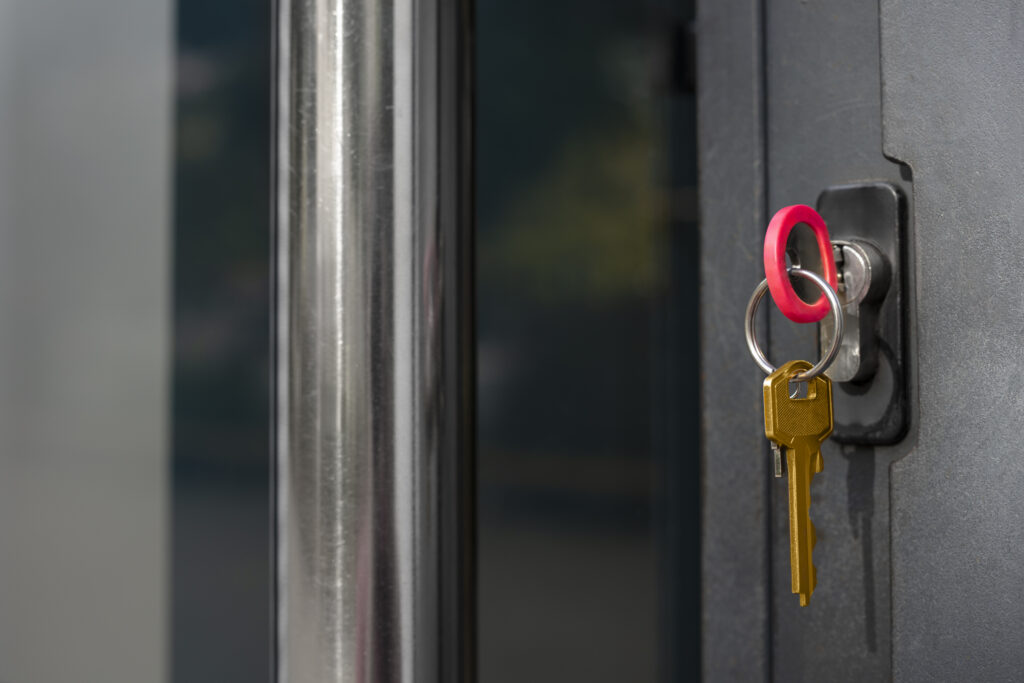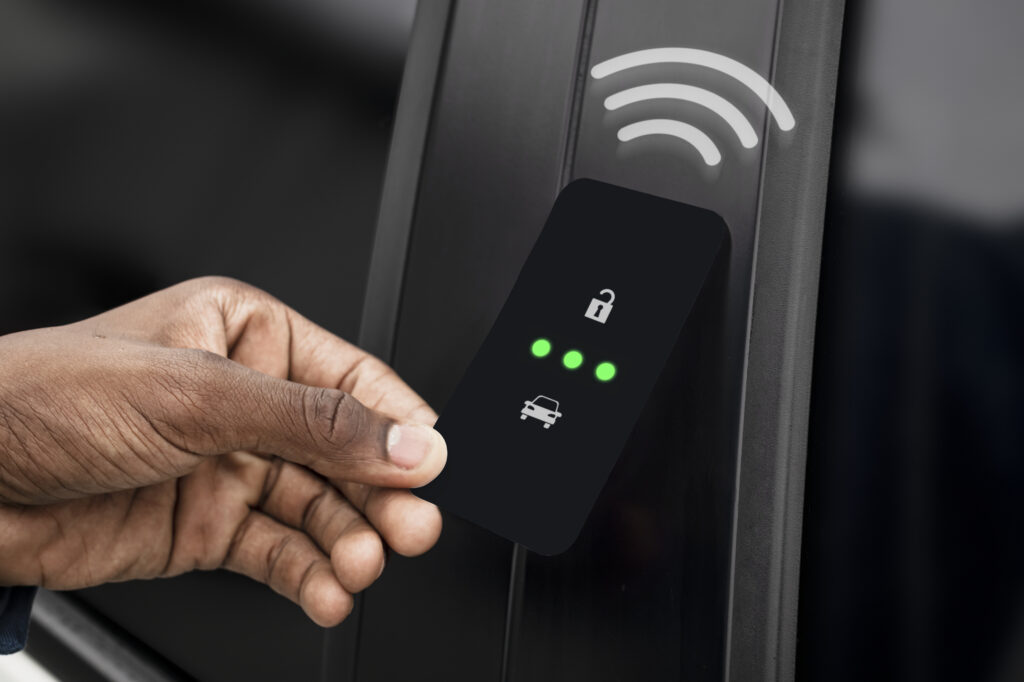Every entrepreneur is well aware that it is of the utmost importance to protect your physical and digital assets. Access control systems protect everything from office buildings to apartments, and even data centers and internet sites. This guide explains the various aspects of access control systems, including their types, components, implementation techniques, advantages, disadvantages, trends, and industry best practices. Whether you are a company owner, a security professional, or just interested in improving security, this one-stop guide will provide you with everything you need to know.
Introduction to Access Control Systems
Access control is a security measure which restricts the number of people and things that are allowed to access a facility or resource. They are critical for safeguarding physical assets such as buildings and rooms, but also digital assets such as data and networks. As they monitor and control access, these solutions stop unauthorized entry, reduce risk, and make sure only authorized users have access to certain areas or data.
Types of Access Control Systems
There are various categories of access control systems in terms of how they operate and the type of access that they control. Learning about types helps you choose the right system based on specific security requirements.
Physical Access Control

Key-Based Systems
Traditionally, key systems utilize actual keys to unlock doors. Though easy and inexpensive, they’re vulnerable to theft of keys or illegal copying.
Card-Based Systems
Card-based systems use access cards or fobs that have RFID or magnetic strips on them. They provide more control and are easy to administer, so that access permissions can be easily removed or altered.
Biometric Systems
Biometrics employ biological fingerprints, facial recognition or iris scans to authenticate people. They are highly secure in that access is restricted to authorized users only.
Electronic Access Control

Electronic access controls use electronic devices like keypads, cards, and electronic locks. They are flexible, and can be combined with other security systems to provide full protection.
Cybersecurity Access Control
In the online world, cybersecurity access control controls access to information, apps and networks. It contains authentication protocols, firewalls, and role-based access control (RBAC) to guard against unwanted digital access.
you might want to check out our Apartment Access Control and Door Access Control System if you are looking for access control for your home of office.
Details of Access Control System Types
By knowing the subtle differences among access control solutions, it will be easier to make an informed decision based on individual security needs.
Standalone vs. Networked Systems
- Standalone Systems: Run on their own, without connecting to any other devices. It’s perfect for smaller environments that don’t require a central control.
- Networked Systems: Attached to a central server or network for central control, monitoring, and administration at multiple sites. Suitable for larger organizations with multiple locations.
Proximity vs. Smart Card Systems
- Proximity Systems: Utilize RFID to authorize access when the card is in proximity to the reader. They give you ease and instantaneous access, but no touching.
- Smart Card Systems: Powered by microprocessors, smart cards store and process information that enables safer and versatile access control options such as encryption and multi-factor authentication.
Comprehensive Authentication Methods
Authentication is the foundation of access control protocols, allowing only authorized users into the system.
- Single-Factor Authentication (SFA): Requires only one type of verification, typically an ID the user already has (e.g., a key card).
- MFA: Reconciles two or more authentication options — something you have (key card), something you are (biometric), and something you know (PIN).
- Token-Based Authentication: Uses physical or digital tokens to provide unique keys for entry.
- Behavioral Biometrics: Tracks users’ patterns of movement, like typing speed or walking pattern, to identify them.
Pros and Cons:
| Authentication Method | Pros | Cons |
| Single-Factor Authentication (SFA) | Simple and cost-effective | Less secure, vulnerable to duplication |
| Multi-Factor Authentication (MFA) | Enhanced security | More complex, potentially higher costs |
| Token-Based Authentication | Secure and versatile | Requires token management, potential loss |
| Behavioral Biometrics | Difficult to spoof, continuous verification | Privacy concerns, higher implementation costs |
Components of Access Control Systems
An effective access control system is made up of hardware and software components working together to enforce security policies.
Hardware Components
- Controllers: Serve as the brain of the system, handling access requests and interacting with other components.
- Readers: Readers of access codes, for example, cards or biometric readers.
- Locks and Actuators: Physical devices that lock or unlock doors or gates, either electronically or manually.
- Cabling and Infrastructure: The wiring and infrastructure required to mount hardware components.
Software Components

- Access Management Tools: Toolkits that allow users and administrators to establish access policies, grant permissions, and monitor usage.
- Authentication Protocols: Security protocols that validate the identity of users like OAuth, SAML, or other proprietary systems.
- Integration APIs: APIs through which the access control system can interact with other software applications, such as HR databases or building management systems.
User Management
The proper control of users is vital to keeping access control systems up and running.
- Role-Based Access Control (RBAC): Assigns roles based on roles of users within the organization so only users are granted access to the resources they need.
- User Lifecycle Management: Enrollment, modification, and deactivation of users when roles evolve in an organization. This includes onboarding new employees, transferring access rights when the role changes, and removing access immediately after departure.
- Self-Service Portals: Users can easily maintain credentials, request access, and edit personal data, saving on administration costs.
Implementation of Access Control Systems
To have a successful access control system, you need to plan, implement and maintain it well.
Planning and Assessment
- Needs Assessment: Define the security requirements according to the environment size, purpose, and risks.
- Budgeting: Create a budget that takes into account hardware, software, installation, and maintenance costs.
- Conformity: Make sure the system conforms to applicable rules and regulations.
Installation Process
- Site Survey: Check the physical layout to figure out where hardware should be placed.
- Hardware Setup: Install and set up devices such as readers, locks, and controllers.
- Software Configuration: Download and install access management software, if needed, and integrate it with your existing IT system.
Integration with Existing Systems
- Interoperability: Make sure that the access control device can interact with other security features including CCTV, alarms and building management systems.
- Data Synchronization: Map user databases and access policies across platforms for efficient use.
Integration with IT Systems
By integrating access controls with IT infrastructures such as Active Directory, LDAP, and other enterprise systems, you can further secure and manage users more effectively.
- AD Integration: Add AD user accounts and roles to the access control layer for centralized user administration.
- LDAP Integration: Lightweight Directory Access Protocol (LDAP) is used to access and edit items in directory services for simple authentication.
- Single Sign-On (SSO): SSO enables a single sign-on and access to multiple systems without needing to provide new credentials.
Benefits of Integration:
- Single Sign-On: Easier to manage users and enforce access policies.
- Better Security: Eliminates inconsistent and unauthorized cross-system attacks.
- Great User Experience: Facilitates faster authentication, avoiding double logins.
Training and Support
- User Education: Provide staff and users with knowledge of how to effectively utilize the new access control system.
- Technical Support: Continuous technical support to resolve issues or patches.
Maintenance and Lifecycle Management

- Regular Service: Check and maintain hardware components on a regular basis to ensure maximum efficiency. These include cleaning readers, checking lock mechanisms, and maintaining network connectivity.
- Software Maintenance: Make sure access management software is continually patched for security updates and functionality enhancements.
- Hardware Upgrades: Update old hardware to ensure system stability and take advantage of emerging technologies.
- Lifecycle Phases: From installation to decommissioning, track each phase to ensure the system is efficient and long lasting. Plan for future upgrades and hardware replacements as part of lifecycle management.
read more about access control systems maintenance and if you need a check list we got you covered.
Benefits of Access Control Systems
The benefits of implementing an access control system are numerous both in terms of security and efficiency.
Enhanced Security
Access controls offer effective safeguards against unauthorized access, decreasing the likelihood of theft, damage, and other intruders.
Efficient Access Management
Users can easily grant, edit, and delete access, making sure that only approved users have access to certain areas or resources.
Audit Trails and Monitoring
With the built-in logging and monitoring features, you can monitor the access attempts, which helps you spot fraudulent activities and probe when they occur.
Convenience and Flexibility
Access control systems these days come with such advantages as mobile access, remote management, and compatibility with other technologies for greater user comfort and system flexibility.
Operational Efficiency
Simple access management frees security employees to concentrate on more strategic activities and spend less time managing manual procedures and administration. Automated employee onboarding and offboarding improves overall process effectiveness.
Challenges and Considerations
Although access control systems can bring significant benefits, there are also difficulties and considerations involved in setting them up and operating them.
Cost Implications
Invest in advanced features such as biometric access, which will be costly to install at the start. Additionally, ongoing maintenance and upgrades can increase the cost.
Scalability Issues
Access control systems must adapt as organisations expand. It is important to ensure that the envisioned system allows for growth without major reform.
Privacy Concerns
Biometrics and access-control information collection also pose privacy concerns. You need to be careful with your personal information and follow the privacy rules.
Integration Complexities
The process of integrating access control systems with existing infrastructure and other security systems can be complex, and requires expertise and preparation to ensure compatibility.
Troubleshooting and Common Issues
- Reader Failure: Card reader or biometric scanner malfunctions may hinder authorized use. You need to keep your machine maintained and replaced as soon as possible.
- Network Issues: For a networked or cloud-based system, reliable internet connectivity is essential. Maintain backup connections to reduce downtime.
- Credential Inaccuracies: Using the wrong or outdated credentials can result in denials. Create self-service portals to allow users to manage their credentials and audit on a regular basis.
- Application Bugs: Program crashes or bugs can cause access control issues. It will require periodic software updates and solid support to correct these problems as soon as possible.
New Trends in Access Control Systems

Access control is an evolving technology that adapts to new security demands.
Cloud-Based Access Control
The cloud-based access control systems provides scaling, remote management, and reduced on-premises dependence. They allow for centralised management and updating.
Mobile Access Solutions
Access control using smartphones and wearables improves convenience and safety. Mobile credentials are simple to update and maintain in real-time.
AI and Machine Learning Integration
Artificial intelligence and machine learning are used to increase access control by providing better authentication strategies, more secure predictive protection, and anomaly detection.
Internet of Things (IoT) Integration
Combining access control with IoT devices lets you implement broader security systems like smart locks, environmental monitoring, and automated alarms.
User Behavior Analytics
Access control systems can even take advantage of analytics on user behaviour to identify suspicious activities and boost security. By detecting a pattern of user activity based on access hours and geographic location, systems can spot vulnerabilities and act accordingly to mitigate breaches.
Advanced Features
Access control systems now have many other advanced features that extend their functionality and security capabilities.
Time-Based Access Control
Time-based access control allows users to limit access during predetermined hours. For instance, some areas may be accessible only during business hours or specific shifts and keep them safer during off-hours.
Visitor Management Integration
Adding visitor management systems and access control together makes it easy to manage visitors’ temporary access efficiently. These can include pre-registration, temporary passwords, and revoke access at a predetermined interval.
Emergency Access and Evacuation Support
Access control can be programmed to follow safety protocols to allow emergency access and facilitate evacuation. These can be fail-safe or fail-secure modes, where doors are opened in case of an emergency to ensure you get out safely and quickly.
Alerts and Notifications
Access control solutions can generate real-time alerts and notifications for events related to access, including unauthorised entry, opening the door or system failure. These alerts can be customised to meet specific security needs and are sent via email, SMS or within security monitoring dashboards.
Compliance and Standards
Implementing an access control system isn’t only about security; it’s about complying with regulations and industry standards. Using these guidelines will not only save your company in the eyes of the law, but build credibility with your clients and stakeholders.
Regulatory Compliance
- ISO/IEC 27001: This international standard specifies the steps to develop, implement, maintain, and continuously upgrade an information security management system (ISMS). For security, access control systems should meet the requirements of ISO/IEC 27001.
- GDPR (General Data Protection Regulation): GDPR is of paramount importance to any business based in the European Union, or that handles data from EU citizens. Personal data that is under access control must be robustly protected and open to request for access and deletion.
Industry-Specific Requirements
- Health (HIPAA): The Health Insurance Portability and Accountability Act requires rigorous surveillance of patient data. Access control in healthcare facilities must ensure that only qualified personnel have access to private medical information.
- Finance (PCI DSS): The Payment Card Industry Data Security Standard (PCI DSS) mandates that financial organizations use strict access controls to ensure cardholder information is not hacked or accessed by unauthorized individuals.
Compliance Certifications
- Vendor Certifications: Prominent access control system providers often hold certifications which prove their conformance to different security guidelines. For instance, LenelS2 might be ISO certified, Brivo SOC 2 certified, and LiftMaster might have smart home integration certifications.
- Industry-Specific Certifications: Industry-specific certifications like HIPAA for healthcare or PCI DSS for banking help ensure that your access control system meets the rigorous requirements of those industries.
Best Practices for Compliance
- Monthly Audits: Conduct regular audits of your access controls to make sure that they stay in full compliance with standards and regulations.
- Documentation: Create detailed records of access control policies, protocols, and configurations in order to demonstrate compliance when audited.
- Education and Awareness: Train your employees on the need for compliance and maintaining access control policies to avoid human mistakes and insider risks.
Customization and Scalability
Security demands vary with each organization. Customization and scalability is crucial in order to ensure that the access control system grows with your business and your evolving needs.
Modular Systems
Modular access control systems let enterprises expand their security system as required. By adding modules, organizations are able to add new features or cover new areas without refactoring the entire system.
Custom Solutions
Adapting access control solutions to specific business requirements guarantees the right solutions for unique security challenges. Customization may include customized hardware, customised authentication, or custom software integrations tailored to an organization’s business processes.
Environmental and Sustainability Considerations
- Energy Efficiency: Access control systems today are built to save energy by utilizing power saving features such as low power appliances and scheduling.
- Sustainable Standards: Implementing systems that are made with environmentally friendly materials and sustainable manufacturing processes helps reduce the impact on the environment and can support an organization’s sustainability standards.
Integration with Other Security Systems

If you want a comprehensive security strategy, access controls need to seamlessly integrate with other security technologies. This integration increases overall security efficiency and central management capabilities.
Video Surveillance (CCTV)
Combining access control with video surveillance lets you view access points in real-time. Its integration can trigger camera recording during access incidents to provide visual confirmation and improve incident response.
Alarm Systems
Access controls can coordinate with alarms to give a coordinated security response. Access attempts from an unauthorized party can set off alarms, for example, and emergency access can turn off alarms automatically to avoid false alarms when evacuation occurs.
Building Management Systems (BMS)
Combining access control with building management systems automates operations and enables centralized management of building components including lighting, HVAC, and security. The integration can give you the benefit of increased energy savings and security management.
User Experience and Accessibility
Simple and intuitive access control solutions ensure adoption and minimize disruption to the day-to-day process. The accessibility aspects also make the system easy to navigate for anyone, even a person with disabilities.
Ease of Use
Creating user experience in access control systems means intuitive interfaces, simple credential handling, and low learning curves. Facilitation drives conformance and mitigates user inadequacies.
Accessibility Features
Ensure that access control solutions are accessible to disabled users by offering functionality such as:
- Voice-Activated Access: Users with limited mobility can open doors without physical interaction.
- Visual and Audio Signals: Clear indication for successful or unsuccessful access attempts.
- Multiple Access Credentials: Multiple authentication options that fit all requirements and desires.
Cost-Benefit Analysis
There are fixed costs associated with investing in an access control system. By performing a cost-benefit analysis, businesses can know how much they are spending and what they will gain by increasing security.
Return on Investment (ROI)
- In the Long Run, Save: Lower theft, vandalism and security breaches can outweigh the initial investment in the long run.
- Operational Efficiency: Improved access control and fewer manual interventions could mean significant labor and administrative savings.
Total Cost of Ownership (TCO)
- Installation Charges: Hardware, software, and expert installation costs.
- Maintenance & Upgrades: Continuous maintenance costs, software upgrades, and hardware replacement.
- Training and Support: To train staff and technical assistance so that the system can work efficiently.
Cost Models and Financing Options
- Monthly/Annual Fees: Access control services available as a service (SaaS) that you subscribe to monthly or annually. The model often includes maintenance and updates.
- Single-Purchase: The old-school approach where organizations buy the hardware and software on a per-user basis at a time and incur high upfront expenses but perhaps lower costs in the long term.
- Leasing and Financing: You can lease equipment or pay for it through installments, so there’s no upfront cost to you and you can stretch your budget.
Future-Proofing Your Access Control System
If you want to keep your access control system secure and resilient as the security threat evolves and technology advances, take the following steps.
Upgradability
Consider access control systems that allow for straightforward upgrades to incorporate new technologies and functions. Module-based systems or ones that are updated regularly with software will be better suited for future demands.
Vendor Support and Warranties
Choosing a reputable vendor with great support and strong warranties will ensure the long-term durability of the system. A good vendor relationship ensures support in the form of technical support, updates, and replacements when required.
Disaster Recovery and Redundancy
- Disaster Recovery: Establish procedures for ensuring that access controls stay operational during disasters. That means having backup power supplies and data recovery procedures.
- Backup & Failover: Use backup and failover solutions to ensure no downtime. Multiple controllers and network connections are able to guarantee uninterrupted access control even in the event of a primary system failure.
Popular Access Control System Brands
The selection of an access control system generally means choosing a trusted brand that can accommodate your security requirements. These are some of the most popular brands in the access control market, each with its own solution for specific use cases.
DoorKing Gates & Intercoms
DoorKing is known for its extensive gate and intercom solutions, which are compatible with all access control devices. They provide home and commercial customers with high security, yet user friendly products. DoorKing’s intercom systems include video communications, remote access control, and mobile phone connectivity for greater security and ease of use.
Key Features:
- Intercom video and audio functions
- Mobile control and remote access.
- Integration with existing security and automation platforms.
- Stable, weather-resistant designs for outdoor applications.
LenelS2 Access Control
LenelS2, a subsidiary of Carrier Global Corporation, delivers robust, scalable, integrated access control solutions. Their LenelS2 OnGuard solution is a full-featured security management platform, featuring real-time access control, video integration, and analytics. LenelS2 systems can be deployed in large corporations, universities, hospitals, and public buildings.
Key Features:
- One-stop administration for multiple sites
- Integration with video management systems (VMS) and other security technologies.
- Advanced reporting and analytics
- Multi-factor authentication/biometric integration support.
Brivo Cloud Access Control
Brivo provides cloud-based access control and combines flexibility and simplicity of management with the Brivo Onair platform. Brivo’s solutions are suitable for organizations looking for scalable and remotely managed security. The Cloud technology supports real-time monitoring, mobile access and integration with other cloud providers.
Key Features:
- Manage from anywhere via the cloud.
- Mobile credentials and remote access management.
- Compatible with video monitoring and other security devices.
- Highly scalable offerings suitable for businesses of all sizes.
LiftMaster Automation
LiftMaster, part of Chamberlain Group, is one of the leading manufacturers of automated access products, especially door operators and smart access systems. Intelligent access control with integrated integration capabilities for smart homes and businesses are available from LiftMaster’s AccessHub platform. Their offerings focus on convenience, durability, and integration with cutting-edge smart technologies.
Key Features:
- Secure access control – mobile and online management.
- Integration with smart homes and IoT devices.
- Safe and effective door opening systems.
- Friendly interfaces and seamless integration with existing infrastructure.
Vendor Selection Guide

Choosing the right vendor for your access control system will ensure dependability, support, and a perfect fit for your security requirements. The following are some of the key considerations when selecting an access control provider:
Evaluation Criteria
- Brand & Experience: Find companies that have an established reputation and good ratings from customers.
- Product Portfolio: Make sure that the vendor provides a broad product portfolio that caters to your business needs.
- Support and Service: Find out how much support customers receive in terms of installation, technical, and maintenance services.
- Scalability: Pick vendors with scalable solutions to support future growth and evolving security requirements.
- Integration Support: Make sure the vendor’s infrastructure can integrate with your existing security and IT environment.
- Certifications and Standards: Make sure that the vendor is compliant with industry standards and is certified.
- Pricing and Financing: Search the pricing plans and financing options to choose a plan that fits your needs.
Comparison Tools
- Vendor evaluation checklists: Use vendor evaluation checklists to thoroughly vet multiple providers according to your needs.
- RFP: Create and send RFP to shortlisted vendors to gather information and offers.
- Product Demos and Trials: Request product demonstrations or trial periods to determine how effective and intuitive the access control systems are.
Best Practices for Implementing Access Control
Practicing best practices will ensure that your access controls will be efficient, secure and user-friendly.
- Thorough Assessment: Be sure of your security requirements and environment before you decide to use a system.
- Select Scalable Solutions: Select systems that adapt to the demands of your business.
- UX: Make the system easy to use in order to encourage adherence and eliminate friction.
- Update and Maintain regularly: Keep your software and hardware current to avoid vulnerabilities.
- Strong Authentication: Secure using multi-factor authentication.
- Keep Track & Audit: Keep an eye on access logs and perform frequent audits to spot problems and solve them in a timely manner.
- Create Long-Term Policies: Set up clear access control policies and procedures to govern the use and management of your system.
- Engage Stakeholders: Work with important stakeholders during planning and deployment to make sure the system aligns with organizational needs.
- Training & Support: Train users and administrators regularly to use and maintain the system efficiently.
- Test and Validate: Test the access control system on a regular basis to ensure that it works as planned and meets security standards.
Case Studies and Real-World Applications
Corporate Office Security
One international company put in place a biometric access control system at its offices worldwide. This not only increased security but also simplified access control, enabling HR to quickly onboard and offboard workers. Combining LenelS2 OnGuard with their current IT platform, the organization had centralised control and 24/7 monitoring of access points, greatly reducing risk of unauthorized entry.
Residential Complex Management
One luxurious apartment building embraced Brivo Cloud Access Control’s mobile access solution that allowed residents to unlock doors and enter communal areas with their smartphones. This gave us more flexibility while retaining a secure infrastructure. The connection to DoorKing Gates & Intercoms enabled homeowners to seamlessly communicate and control access remotely, while delivering security and convenience.
Data Center Protection
One data center combined electronic access control with cybersecurity, to allow only legitimate employees into restricted spaces and digital assets, preserving sensitive information. Through LiftMaster Automation’s Access Hub platform, the data center was able to leverage smart access control that could be continuously monitored and connected to their video surveillance cameras for more security and lower costs.
Educational Institution Access Control
A large university had deployed a distributed access control system (using LenelS2 OnGuard) across multiple campuses. The platform synched with the university’s existing IT infrastructure, enabling management of student and staff credentials in real time. The system also offered visitor management integration, allowing the university to more effectively manage guests and maintain campus security.
Retail Store Chain Security
One retail company implemented Brivo Cloud Access Control to control access at all its stores. The cloud platform offered centralised control, enabling the firm to view access from any location, and react immediately to security breaches. Integration with Brivo Onair gave mobile access to store managers, boosting operational efficiency and eliminating the use of traditional keycards.
Frequently Asked Questions (FAQs)
What is an access control system?
Access Control restricts who or what can access and use resources in a space, so that restricted users can only see specific resources or data.
What are the primary types of access control systems?
Physical Access Control (Key, Card, Biometric), Electronic Access Control, and Cybersecurity Access Control are the three major types.
How do biometrics improve security?
Biometric systems leverage biological features like fingerprints or facial recognition, reducing the access available to unauthorized users.
Do access control systems mesh with other security systems?
No, access control solutions can work in tandem with video surveillance, alarm and building management systems to handle all security needs.
What should I look for when selecting an access control system?
Consider security, scalability, budget, user friendliness, compliance, and interoperability.
What is the difference between cloud access control systems and conventional systems?
Cloud-based systems are scalable, managed remotely, and less reliant on on-premises infrastructure, while older systems might demand more physical hardware and site management.
How much does an access control system cost?
Costs include initial configuration (hardware, software, installation), maintenance and upgrades, training, and technical assistance.
How do I know my access control system is complying with the law?
Make regular audits, keep records and educate yourself about the industry standards and laws.
What is Role-Based Access Control (RBAC)?
RBAC sets permissions to users based on their job role within the organization, so that only the resources they need to perform their jobs are available to them.
What about visitors having limited access for a while?
Work with visitor management systems and your access control system to grant temporary credentials, pre-register visitors, and immediately terminate access if time expires.
Conclusion
These days, access controls are essential for any security environment and provide both physical and digital protection for multiple settings. By understanding their nature, components, benefits and limitations, organizations can make well-informed decisions to optimize their security strategy. Leveraging newest trends such as cloud services, AI integration, and user data analytics helps access control solutions stay flexible and resilient in the face of evolving security threats. Additionally, you can choose dependable brands like DoorKing, LenelS2, Brivo, and LiftMaster to provide robust and sophisticated solutions to your needs. Investing in a comprehensive access control solution not only helps safeguard assets but creates a secure and productive working environment for all parties.
We have told you everything you need to know, and even how to choose a vendor, now it’s time to take action. Would you like to increase your safety with a modernized access control system? Talk to our professionals today and see how we can help you!

